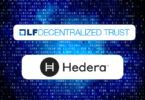Today, as part of the Hyperledger Global Forum, Kaleido has open sourced the multi-party system Firefly, which has been accepted as a Hyperledger Labs project. Separately Kaleido announced that it now supports Hyperledger Fabric as part of its solution offering, a combination of a Blockchain as a Service and building blocks to create blockchain applications.
So what is the Firefly multi-party system? When people think about blockchain apps, they tend to think about the blockchain protocol and the smart contracts on top of that. But getting a solution up and running for a consortium requires more than that. It needs a fair bit of plumbing.
When an enterprise uses a blockchain, they want to integrate the solution with their own backend systems. And the blockchain alone is not enough. They often want to send peer-to-peer messages, files or other data between one or more blockchain participants, which are confidential and not intended for the blockchain.
According to Kaleido, these two plumbing features – internal integration and peer-to-peer sharing – are where consortia spend the bulk of their blockchain budgets. And Kaleido should know because they’ve been involved in some major integrations, including agribusiness consortium Covantis and the trade finance solution Komgo where they supported the likes of Citibank, ING, MUFG and Shell.
Apart from the blockchain and the two plumbing features, there’s also a control panel where the consortium manages the configuration details. Together these create a multi-party system.
Many of the moving parts are themselves open source software, such as the underlying blockchains and decentralized file storage. In terms of enterprise blockchains, Firefly supports Enterprise Ethereum flavors Hyperledger Besu and Quorum, Hyperledger Fabric and Corda.
Kaleido isn’t the only one to announce a new Hyperledger project today. IBM said it’s contributing Hyperledger Fabric Tokens and the IBM Blockchain Platform Console. And Japan’s Datachain introduced YUI.






